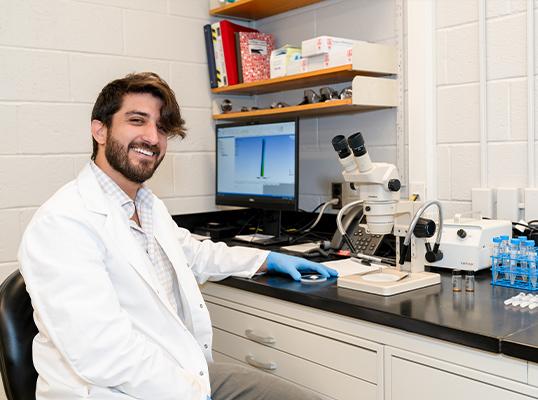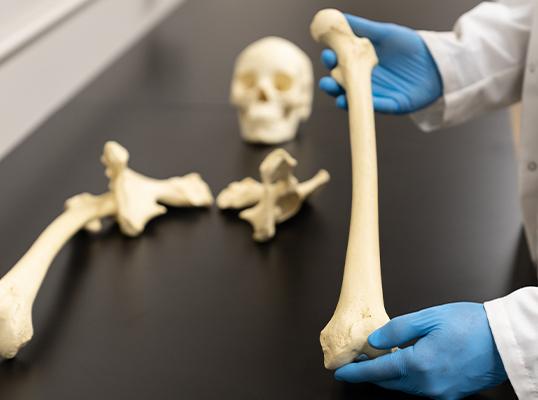In Székelyföld, an ethnically Hungarian region of Romania that once fought for its existence during a period of dictatorship, people are still trying to learn more about the way their ancestors were buried, according to Armando Anzellini.
Three different burial methods were used in the community’s Romanian graveyard, but there is no information as to why.
Anzellini, a bioarchaeologist, forensic anthropologist and assistant professor of anthropology, has been invited by research colleagues to assist in analyzing remains from the burial site, using isotope ratio analysis, to figure out if there is a social or temporal reason for the differences.
It’s one of three projects either ongoing, or just completed, in Anzellini’s Bioarchaeology & Skeletal Biology Lab at Lehigh. Anzellini, who is often assisted by undergraduate research assistants from a variety of disciplines, is also studying the biomechanics of bone—how bone reacts to activity by doing three-dimensional models of the bone. It’s possible the research, in conjunction with research others have done, can one day prevent or treat bone-related ailments. And he just completed a project using Raman spectroscopy, which uses a low-powered laser and the wavelength of light scattered to determine molecular structure.
With isotope ratio analysis and the Romanian remains, Anzellini uses various chemicals, depending on his end goal, on either bone or teeth that are broken into tiny pieces. To study collagen, the organic part of bones, Anzellini uses hydrochloric acid to eat away at the mineral of bone, leaving just collagen behind. To study the mineral, he uses a concentrated version of hydrogen peroxide or sodium hypochlorite bleach to rid the sample of the organic material.






